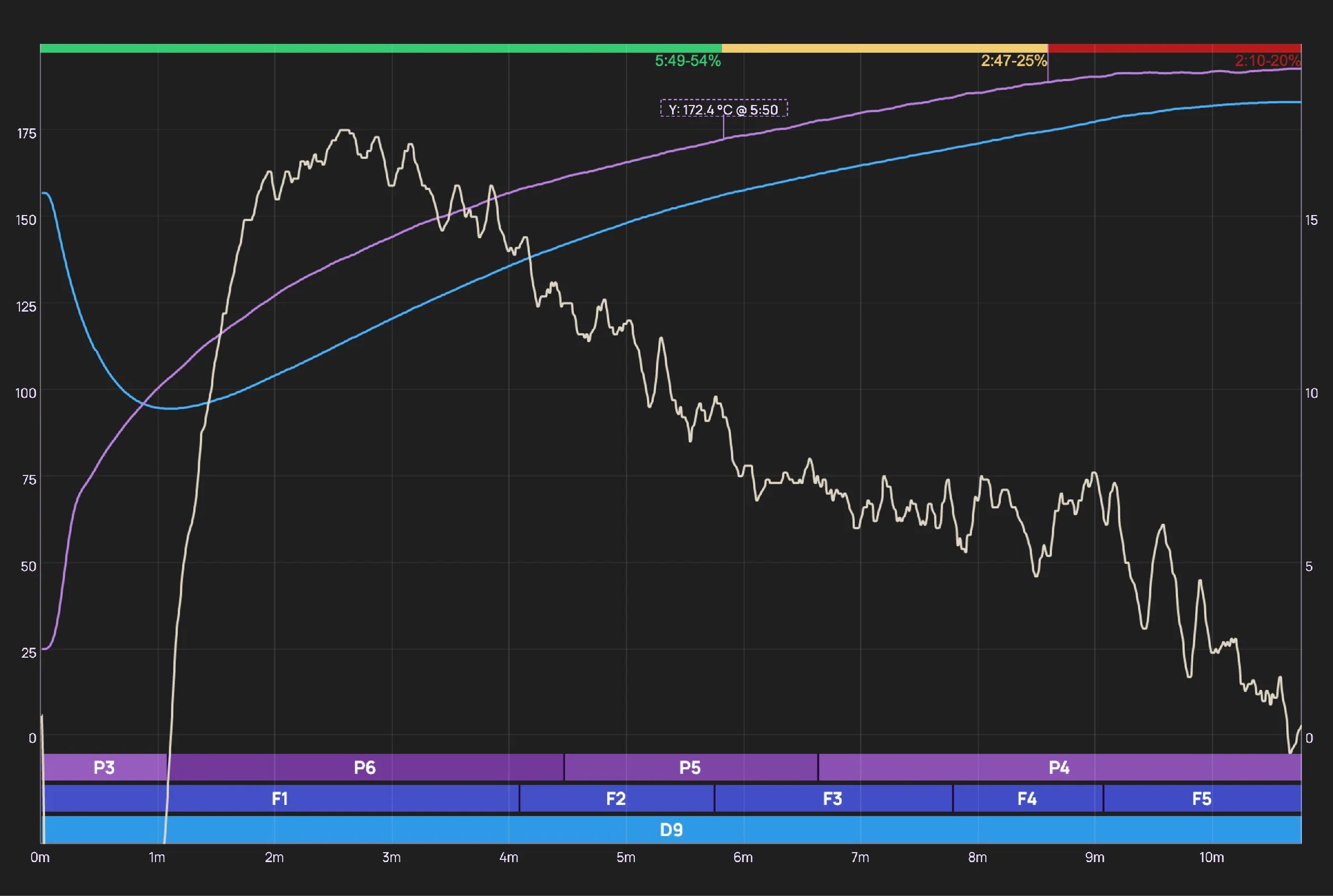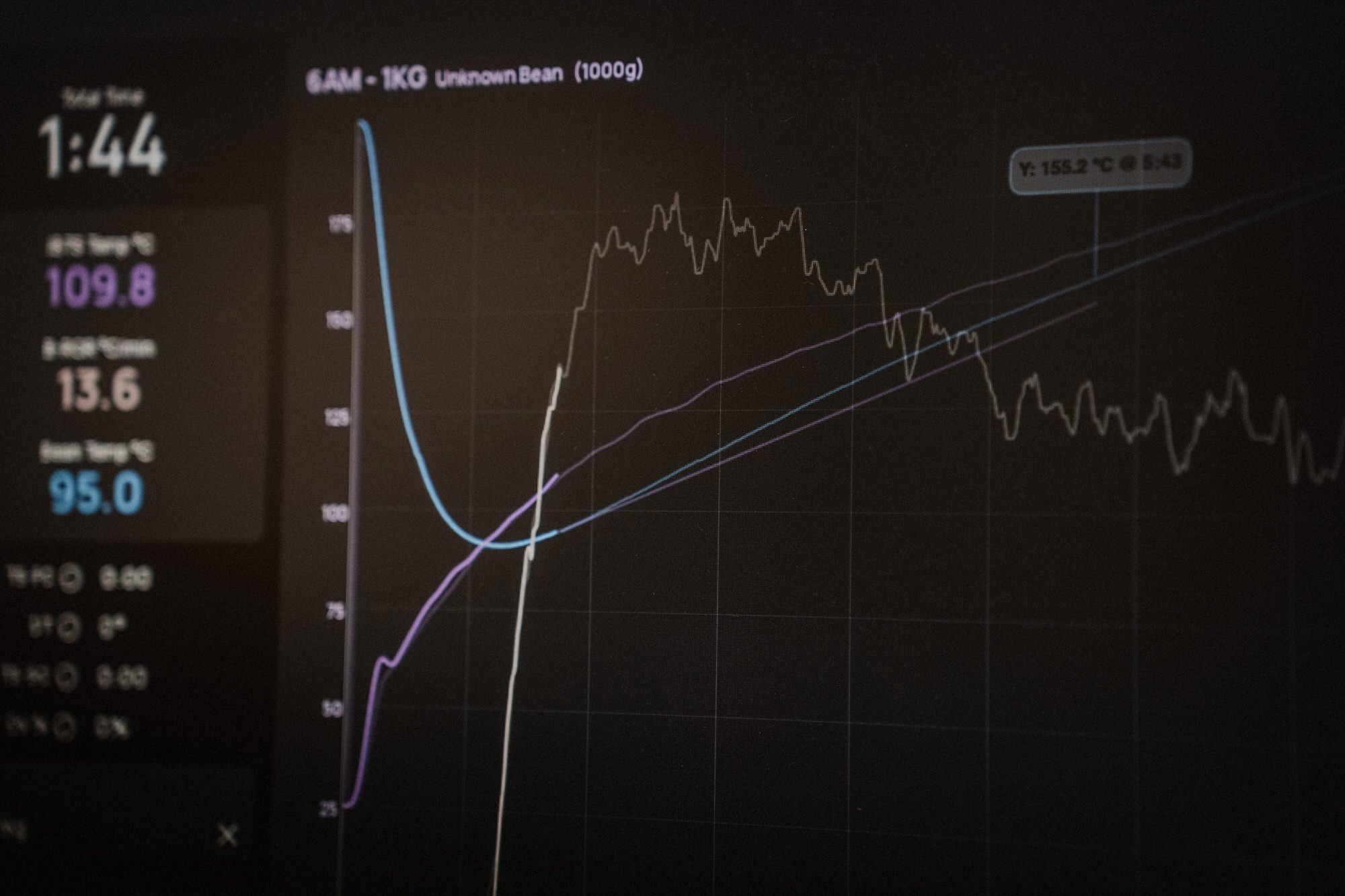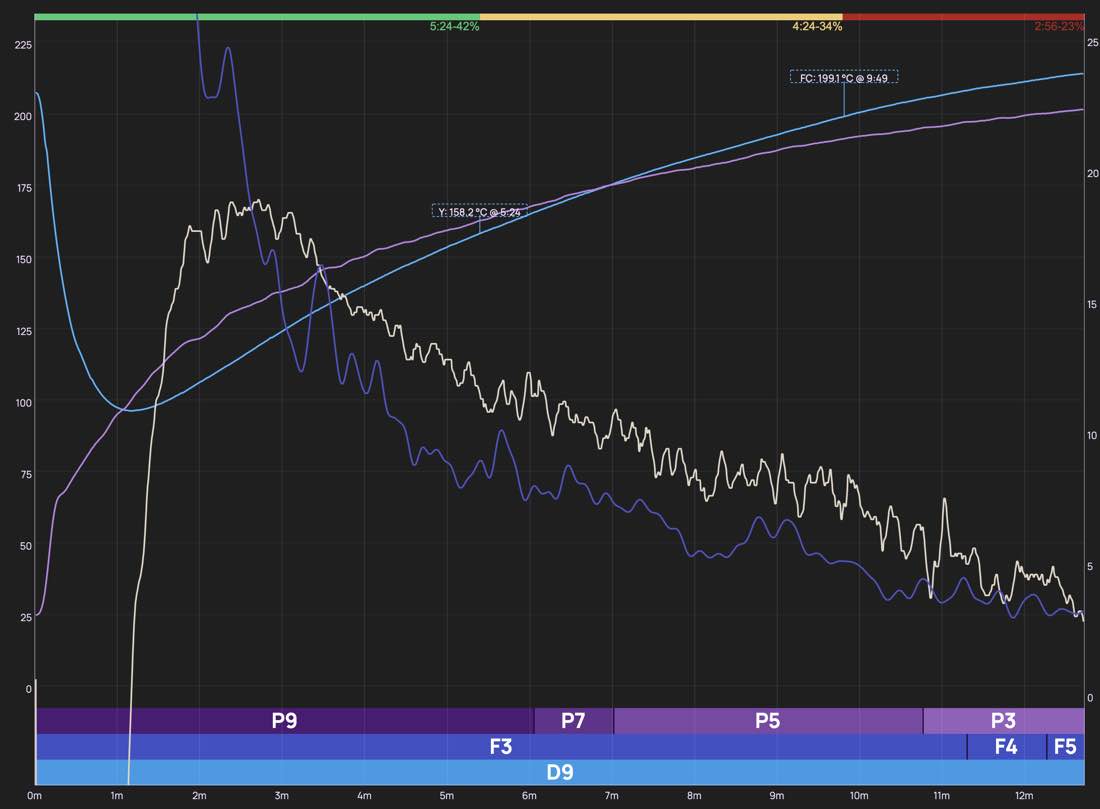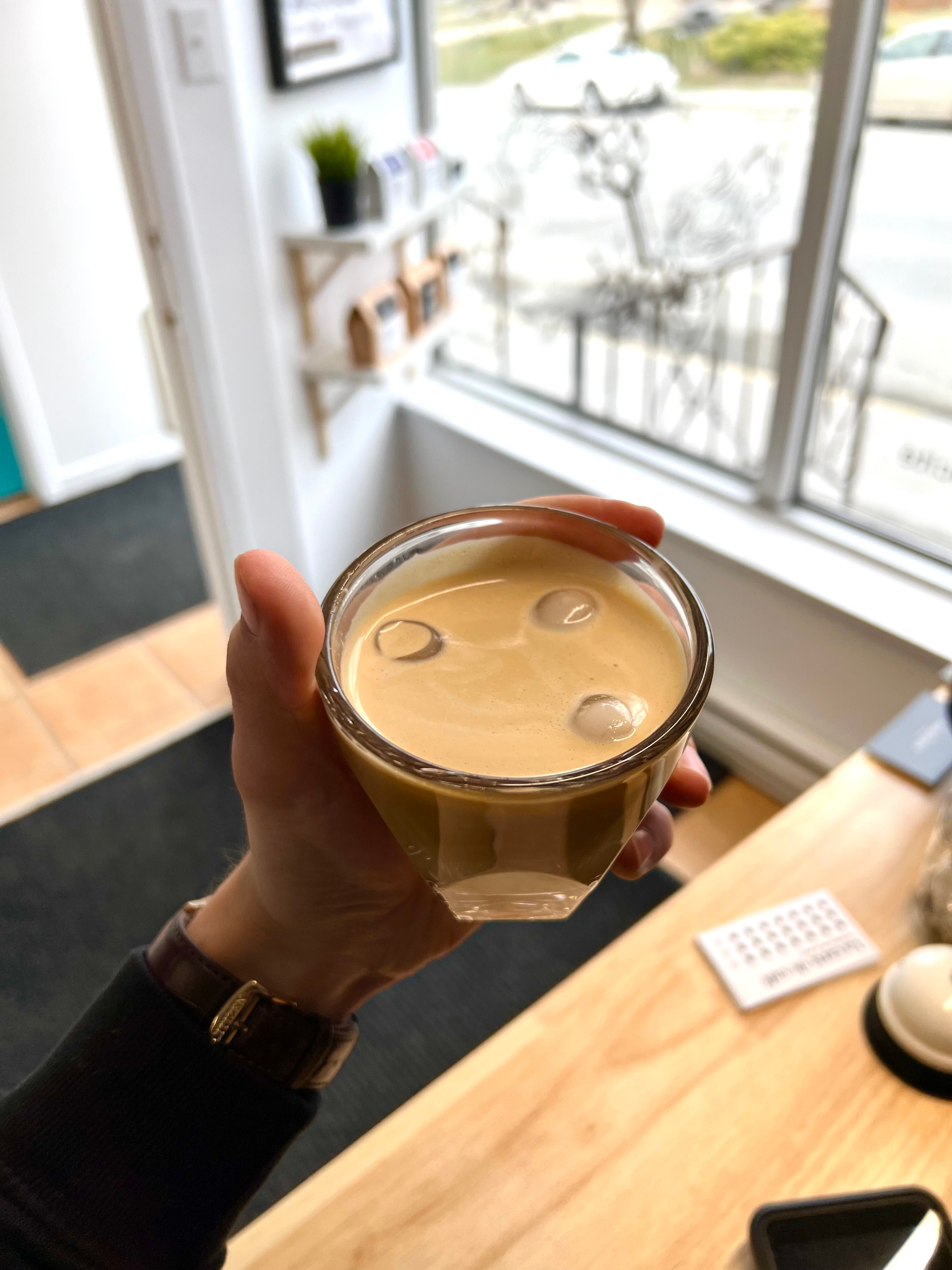Free shipping across Canada 2 bags or 1kg 🤩
Coffee Roasting Basics - How To Roast Coffee
Last edit Mar 22, 2024 ● Published Mar 15, 2024 ● Louis-Charles Blais
Coffee roasting might seem mysterious, yet it's grounded in science to craft the ideal morning brew. Despite the information online and some misconceptions, understanding the basic principles of coffee roasting remains key. This introduction to coffee roasting demystifies the basics.
Why We Roast Coffee
It might seem obvious but we can't dink green coffee beans. Coffee beans begin as seeds within the coffee cherry, undergoing processing and drying before they become the coffee beans we recognize. Before roasting, these beans are green with a grassy scent, far from the coffee aroma we want. Roasting modifies the molecules into around 800 aroma compounds, crafting the coffee's distinct flavor. Through roast profiling, we have the ability to influence these compounds to a certain point, adjusting the coffee's taste.
The Stages of Roasting
Contrary to the previously segmented view, the stages of coffee roasting—drying, browning (Maillard reactions), and development—occur more fluidly than traditionally depicted. Research and practice now indicate that the drying and browning phases extend into the second crack, underscoring the continuous interaction of heat and bean chemistry throughout the roasting process. Here are the traditional phases of coffee roasting as it's useful to know when they start.
Drying Stage
The drying process was tought as the initial stage of coffee roasting. It was said that the green beans with 8-12% of moisture dried in the coffee roaster for four to eight minutes and ended at around 160 ⁰C. We now know that the process of coffee drying extends from the time the bean enters the roaster until the end of the roast. Coffee beans dropped at the second crack still have around 2% moisture content.
Browning Stage
When the coffee reaches 150 ⁰C, it starts to give off aromas of toasted bread and hay, a sign that the process of converting aroma precursors into compounds has begun. The drying phase seamlessly transitions into the browning stage, where the Maillard reaction plays a pivotal role.
The Maillard reaction, involving reducing sugars and amino acids, produces a wide range of aroma and color compounds and accelerates during the development stage, enhancing the coffee's complexity.
Development Stage
At the onset of the development stage, the coffee experiences an exothermic reaction, leading to the phenomenon known as the first crack. This event is fueled by energy accumulated during the drying and browning stages. It is precisely during this phase that the coffee's aroma compounds, begin to flourish, defining the beverage's aromatic profile.
Here, the roaster makes key decisions on roast degree, balancing acidity, body, and flavor to achieve the desired profile, be it light, medium, or dark.
Coffee Roasting Time
Roasting coffee is not a one-size-fits-all endeavor. The ideal roast profile is based on a number of variables, including machine type, gas pressure, and batch size. An eight-minute roast might be perfect for a small air roaster but too fast for a 12kg gas roaster. It's not about prescribing a universal time, understanding how to change your variables based on your roast outcome.
Time To First Crack
Time to first crack is the time is takes from dropping the beans in the roaster to reaching first crack. Factors that affect first crack are dropping temperature, heat applied during the roast, the bean density, the bean moisture and the water activity in the bean.
Coffee Roast Colors
Roasting color is a choice reflecting both personal and commercial interests, based on your target audience. The roast degree will influence the roasting time as darker roastes take longer than lighter roasts. The roast color might also change if your are roasting for filter or espresso. Using roast color is also a a great quality control tool and one of the best predictor of how your coffee is going to taste.
The Controversial Development Time Ratio (DTR)
While the Development Time Ratio (DTR) has sparked debate, it's important to view it as just one of many tools in coffee roasting. Its significance in quality control is often overemphasized. Essentially, it's the ratio of development time to total roast time, but the duration of development more accurately forecasts the coffee's flavor.
Mastering Smooth Rate of Rise (ROR)
Achieving smooth Rate of Rise (ROR) curves is a challenging aspect of roasting. Smooth RORs are also controversial as they have not been proven to improve your roasts. Some say they are crucial for eliminating roast defects and unlocking the coffee's full potential. Rate of rise is also a derivative of a simpler tool, the bean temperature. It is still a great tool to know how the roast is developing but chasing the perfectly smooth ROR won't necessarily give you perfect coffee.
Misunderstood Nature of Baked Roasts
Baked roasts, characterized by a lack of sweetness and a flat acidity, are often mistakenly attributed to slow roasting. In reality, they are more likely the result of abrupt Rate of Rise (ROR) crashes. Understanding the cause is crucial for roasters aiming to preserve the coffee's inherent vibrancy without resorting to baking as a method to tame acidity.
The Critical Role of Data Collection
In the age of data, proper collection and analysis are indispensable. The evolution of roasting has been significantly accelerated by data-logging software like Cropster or Artisan. Correct probe placement and understanding curve reading are foundational. This shift towards data-centric roasting practices has elevated the craft, allowing roasters to refine their techniques with precision and insight.
Conclusion
Coffee roasting intricately combines science, demanding a roaster's expertise, dedication, and passion. It focuses on maximizing each bean's potential, reflecting the roaster's unique preferences and goals. This field invites roasters of all levels to explore, learn, and enjoy the rich experiences and opportunities it provides.




Comments
There are no comments.
Your comment